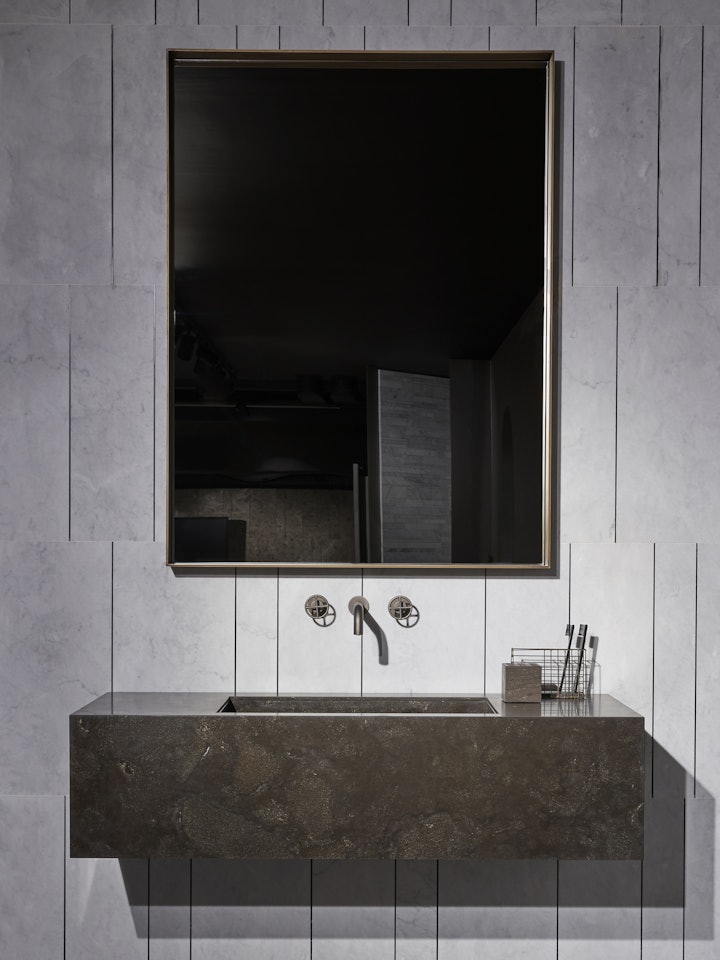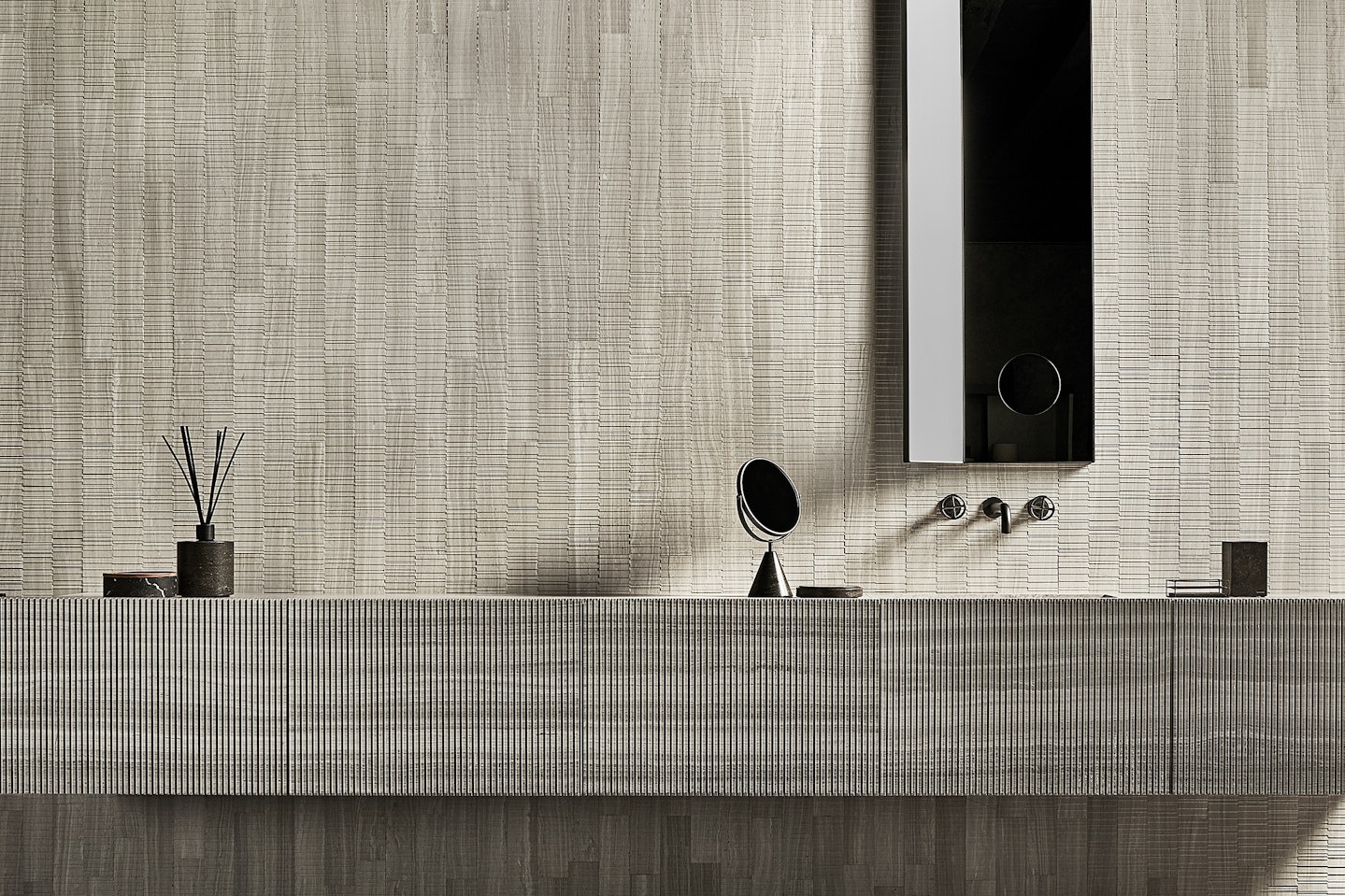How to construct a loadbearing wall to support a basin in natural stone
03.2022
You are in the midst of designing a new bathroom and you’ve found the perfect basin. It’s wall-mounted and you know that with its natural stone and Made in Italy design it will be the centerpiece, bringing the wow factor to a room which is often the last to receive any aesthetic attention.
To ensure it will create the effect you have in mind, however, you’ll need to think about more prosaic aspects. The first, fundamental thing is to ensure that the wall it will be mounted on is strong enough to support it. To help with this, we’ve put together an overview of the key steps to follow to create a load-bearing wall.
Before we launch into that however, just a quick clarification. There are a number of terms used around the world to describe the key material for creating a wall, such as gypsum, gyp board, drywall and so on, but we have chosen to use “plasterboard”.
_pda.jpg?fp-x=0.5&fp-y=0.5&auto=format&w=720&h=960&fm=jpeg&q=70&fit=crop)
Is a plasterboard wall strong enough to support a stone basin?
There is a certain tendency to think that a vanity unit or basin should only ever be fixed to a supporting wall rather than one made from plasterboard or drywall, but this is most definitely not the case. After all, many modern homes are designed using plasterboard walls to divide up the internal spaces, with supporting walls positioned only in critical structural points.
With a growing trend towards wall-mounted toilets and vanity units in the bathroom, it is simply a question of constructing a reinforced partition wall. No matter how heavy the sanitaryware that will be attached to it, there is a way to create a surface that will hold it by choosing an appropriate thickness and structure technique.
The addition of well-designed brackets will deliver a solution that can support wall-mounted items in any type of material, including natural stone.
So, if you have your heart set on a gorgeous piece of design for your bathroom, such as a Balnea basin by Elisa Ossino or something from the Anima collection by Yabu Pushelberg, you can rest assured that the lack of a supporting wall doesn’t matter. Simply read this article to find out all you need to know about building a partition wall that will be more than strong enough to support your beautiful basin.

What you need to build a partition wall
We’ll start with a list of what you need to build a plasterboard internal wall:
- obviously, your basin, complete with all its plumbing-related accessories;
- drill;
- a selection of spanners;
- brackets:
- spirit level;
- silicone.
When it comes to being confident that a basin or any other heavy item of wall-mounted furniture will be secure, brackets play a key role. They are generally prefabricated elements in steel that will provide the necessary support for the product that is being attached to the wall and are screwed into the strut before the plasterboard panels are positioned.
Even if you are substituting a basin, you should still check the existing brackets before installing your new product. This is because it would be relatively unusual for both basins to have exactly the same layout. As such, you will need to drill the structure to create holes to receive the new brackets. You should also plug the old holes with cement or some sort of filler.
